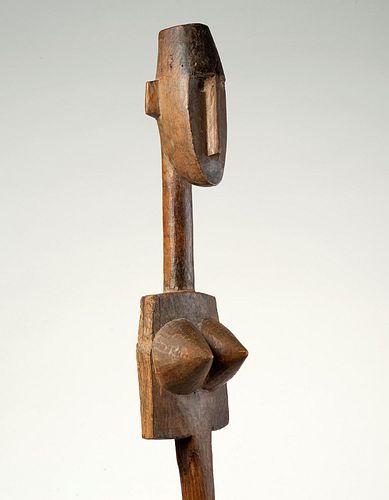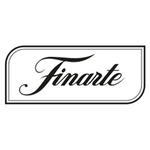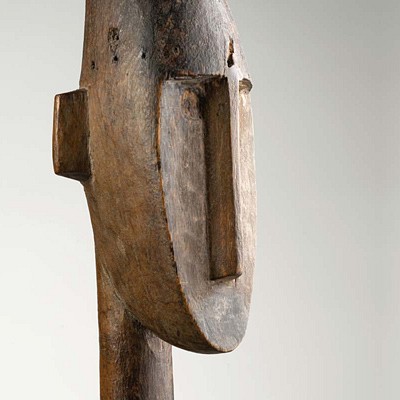Bambara, Segou region (Republic of Mali)
About Seller
Via Sarpi 6
Milano
Italy
Finarte’s core business is the organization of public auctions of works of art and specialty items. Sellers, buyers and investors can rely on our experts for technical and financial advice on works of art, photography, design objects, jewelery, books, wines, vintage fashion and classic cars. In Marc...Read more
Two ways to bid:
- Leave a max absentee bid and the platform will bid on your behalf up to your maximum bid during the live auction.
- Bid live during the auction and your bids will be submitted real-time to the auctioneer.
Bid Increments
| Price | Bid Increment |
|---|---|
| EUR€0 | EUR€10 |
| EUR€200 | EUR€20 |
| EUR€400 | EUR€50 |
| EUR€1,000 | EUR€100 |
| EUR€2,000 | EUR€200 |
| EUR€5,000 | EUR€500 |
| EUR€10,000 | EUR€1,000 |
| EUR€50,000 | EUR€5,000 |
| EUR€100,000 | EUR€10,000 |
| EUR€200,000 | EUR€20,000 |
About Auction
Oct 14, 2020
MILAN Via Paolo Sarpi, 6 (get direction) SESSION (lots 1-77) Wednesday 14 October 2020 5:30 p.m. Finarte info@finarte.it
- Lot Description
Hardwood with a natural clear coating, iron hook on head
H 115 cm
Puppet. It represents the chest of a female figure used as a puppet (Merekun).Sculpted according to traditional Bambara style, the face is carved in an enlarged oval shape which, at the top, becomes a horizontal line in correspondence with the broad forehead. A long nose surges down and divides the face in two parts, marked by circular eyes and characterised by a dark portion in the lower area. A cylindrical neck is inserted on the chest with squared shoulders, where a large cone-shaped bosom is highlighted. This female’s face, it seems that the sculptor wanted to capture a melancholy expression. Here, there is a clear stylistic chance that it would have influenced the faces and necks of the women that Modigliani painted and sculpted. At each side of the shoulders, there are several fractures which the sculpture has suffered throughout time. The moveable arms, now disappeared, were once attached to the body with large iron hooks. It is evident this puppet has been used given the smooth coating present on the rod, showing prolonged human contact.
EXHIBITIONS
- Lugano 2002, Palazzo Riva, Banca Svizzera Italiana (BSI);
LITERATURE
Reproduced in - MORIGI PAOLO “Arte Africana: Le Sculture” Primitive Art Gallery (Galleria Arte Primitiva), Lugano 1975, number 19; - VENTURI LUCA M. “Anime antiche, arte negra, da una raccolta di sculture dell’Africa occidentale” BSI Bank, Lugano 2002, fig. 3; - VARIOUS AUTHORS "Bamana: The art of existence in Mali" Museum Rietberg Zurich Editor Calleyn J. P. 2001, page 88, fig. 62; - GIANINAZZI BARBARA & MAIULLARI PAOLO “Sogo - Maschere e marionette Bamana - Claude and Marthe Everlé Collection, Lugano, Museo delle Culture; October 2012 – March 2013” Editor Mazzotta; - VARIOUS AUTHORS “Modigliani e la spiritualità africana” Modigliani Institut Archives Légales, Paris-Rome 2007 Edizioni Carte Segrete - FINARTE “Asta di sculture africane: expertise di Franco Monti” Milan 27th April 1972;
(*) Henri Bing (1888 Paris - 1965 Paris). Born in Paris, he starts out dedicating himself to designing, painting and lithography. In 1905, he goes to Munich in Bavaria to the Café Stephanie in the lively bohemian quarter, where he meets many artists and writers.In 1918, he returns to France and, in Paris, he meets Modigliani, the painter, with whom he forms a sincere friendship. He settles down on the French Riviera in Cagnes-sur-mer and, in 1918, hosts his Italian friend for a period of time.It is there in 1920 where he learns of the tragic news of Modigliani’s death (Livorno 1884 – Paris 1920).In 1920, Henri Bing, following the end of the war, returns to Paris where he gives up painting and pursues his trade as an art dealer. He buys and sells the work of the greatest contemporary artists like Braque, Matisse, Rousseau, Soutine and Modigliani.From 1925 to 1932, he owns a gallery and, in 1927, puts on the first and only exhibition of Chaim Soutine’s work (Lithuania 1894 – Paris 1943). He is also passionate about primitive art works: the 115cm high Bambara puppet was found in his study on a gothic stool. It is therefore plausible that Modigliani was struck by it when he saw it. In 1906, during his first stay in Paris, Modigliani had many opportunities to see African works which, at that time, aroused the interest of his friends in Montmartre. Primitive works which left a tangible sign in his artistic production. - Shipping Info
-
Upon written request of the Buyer, Finarte may arrange the packaging and shipment of the lot, on condition that the Buyer: (a) has fully paid the Total amount due; (b) provides Finarte with any certificate of free circulation or export licence or any statement and/or certification required for such purpose. Unless otherwise agreed with the Buyer: (a) packaging and shipment expenses shall be for the account of the Buyer, who may request, at least twenty-four (24) hours before the beginning of the auction, estimates of costs should the Buyer decide to entrust Finarte with the packaging and shipping of the lot; (b) the insurance coverage concerning any risk for (even partial) loss and/or damage caused to the lot during transport must be agreed between the Buyer and the carrier without any liability for Finarte; (c) the cost of insurance shall be for the account of the Buyer. The shipment and packaging of the lot to the Buyer shall be entirely at the risk and expenses of the Buyer and Finarte shall in no event be held liable for any action or omission of packaging workers or carriers.
-
- Buyer's Premium



 EUR
EUR CAD
CAD AUD
AUD GBP
GBP MXN
MXN HKD
HKD CNY
CNY MYR
MYR SEK
SEK SGD
SGD CHF
CHF THB
THB














